Yellowstone National Park, the first national park in the United States and one of the most famous protected areas in the world, has much to recommend it. Many go for the geothermal features, the scenic vistas and the great hikes.
For me, as great as those features are, Yellowstone will always be a place to view large wildlife. You can spot great herds of bison, grizzly bears rooting for ground squirrels, otters swimming after cutthroat trout, and bighorn sheep scampering up cliff faces.
Many first-time visitors, though, have difficulty finding wildlife. It’s a big park. Standing on a boardwalk, the idea of spotting a wolf feels unrealistic. You hear others speaking of their great views of a black bear with cubs and wonder what you’re doing wrong. To make matters worse, armchair experts on many travel forums give inaccurate advice.
I’ve spent a lot of time in Yellowstone looking for large animals. Here are some tips to help you find what you’re seeking, whether you’re a first-time visitor or seasoned wildlife spotter. You’ll find links to help in your quest.
To make this the best resource possible, post your questions and suggestions in the Comments section. I’ll respond as quickly as possible.
-
Top Spots to See Yellowstone’s Wildlife
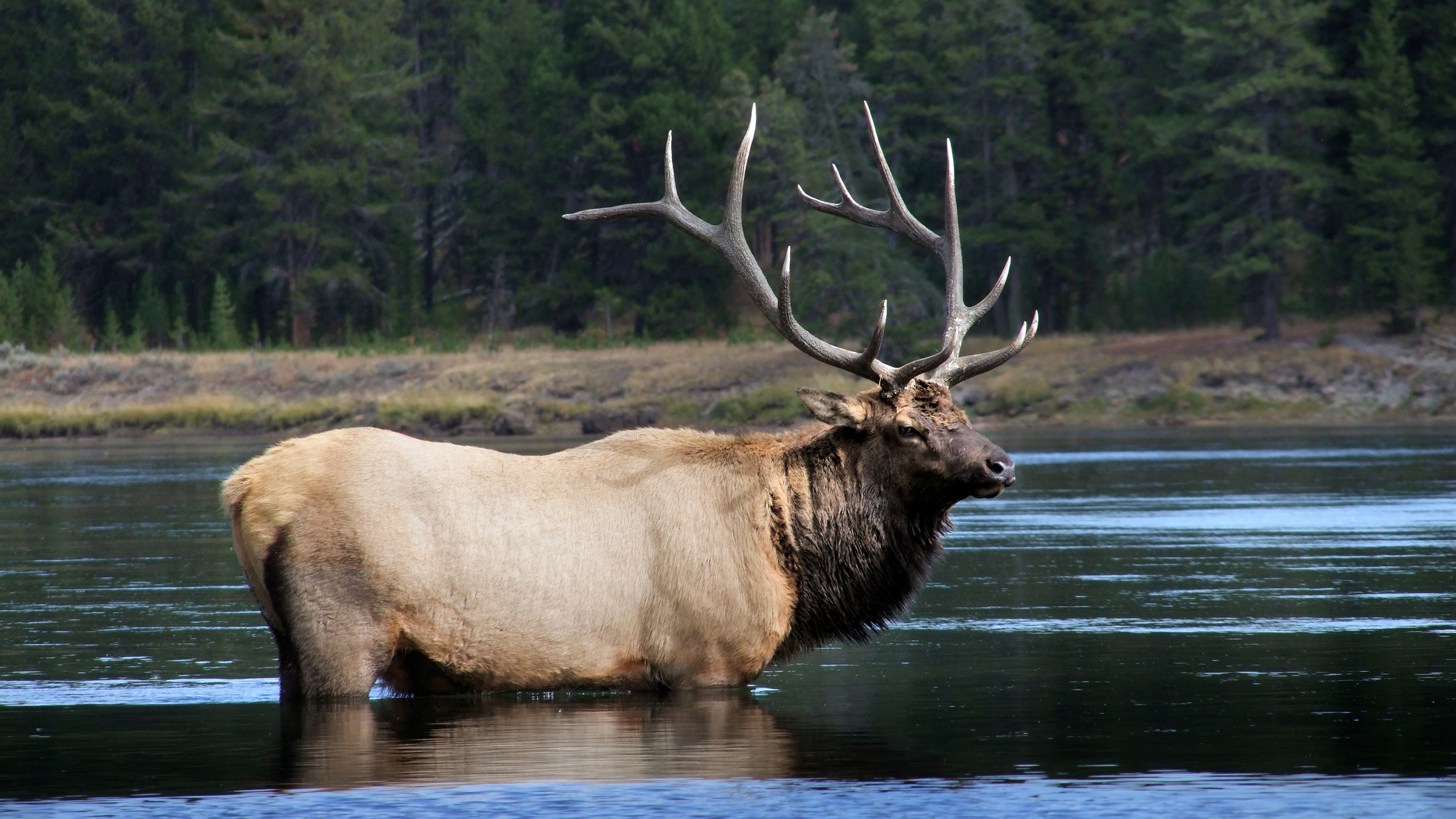
Bull elk in Yellowstone. Photo © Phil Parsons /Flickr To maximize your chances of great wildlife sightings, you have to be looking in the right places. You can see cool animals anywhere – some of my most memorable sightings have been away from the “hotspots” – but some places do produce better than others.
My short suggestion: Spend much of your time in the northern part of the park. It’s less crowded and is spectacular for wildlife.
Here are my five picks for top wildlife viewing spots.
-
Where to See Wolves and Bears
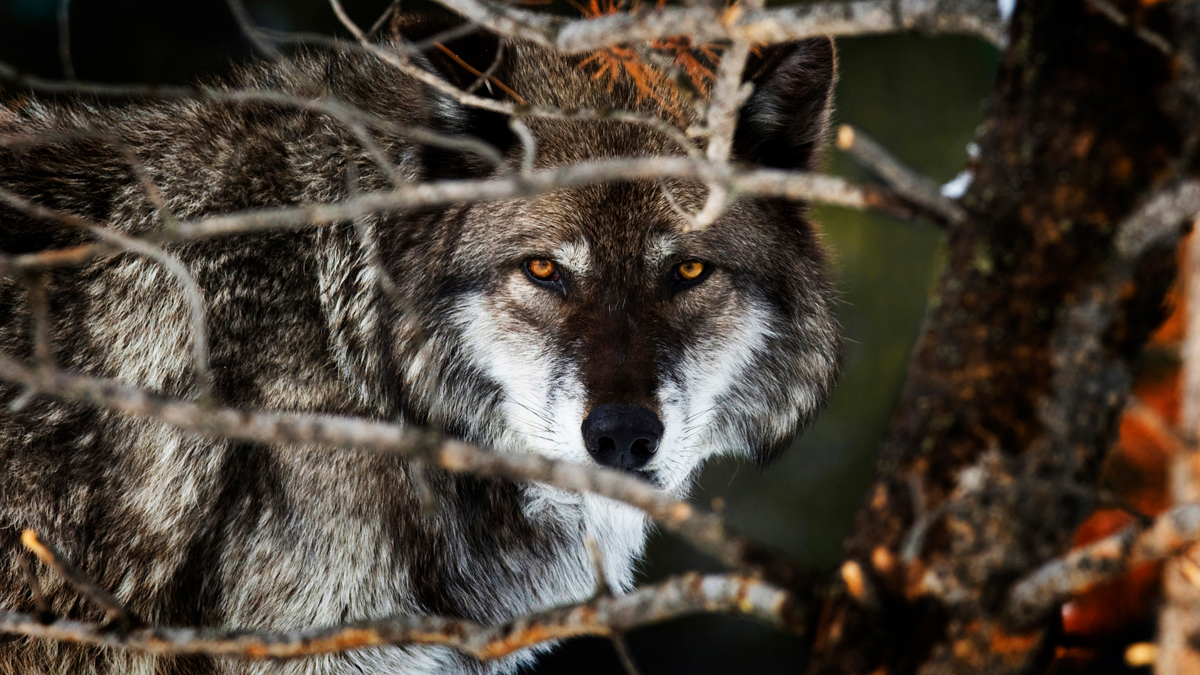
Yellowstone wolf in Woods. Photo © Jeremy Weber / Flickr through a Creative Commons license For many visitors, seeing gray wolves, black bears and grizzlies is high on their list of priorities. These large predators are magnificent. They also take a bit more effort than seeing bison. (If you can’t find bison in Yellowstone, it’s probably time to take up another hobby).
Some online sources make it sound like it’s just luck if you see a wolf or bear. There is luck involved, but put in the time and you have a great chance of memorable sightings.
My tips for seeing wolves and bears in Yellowstone will point you in the right direction.
-
Keep Up on the Latest Sightings
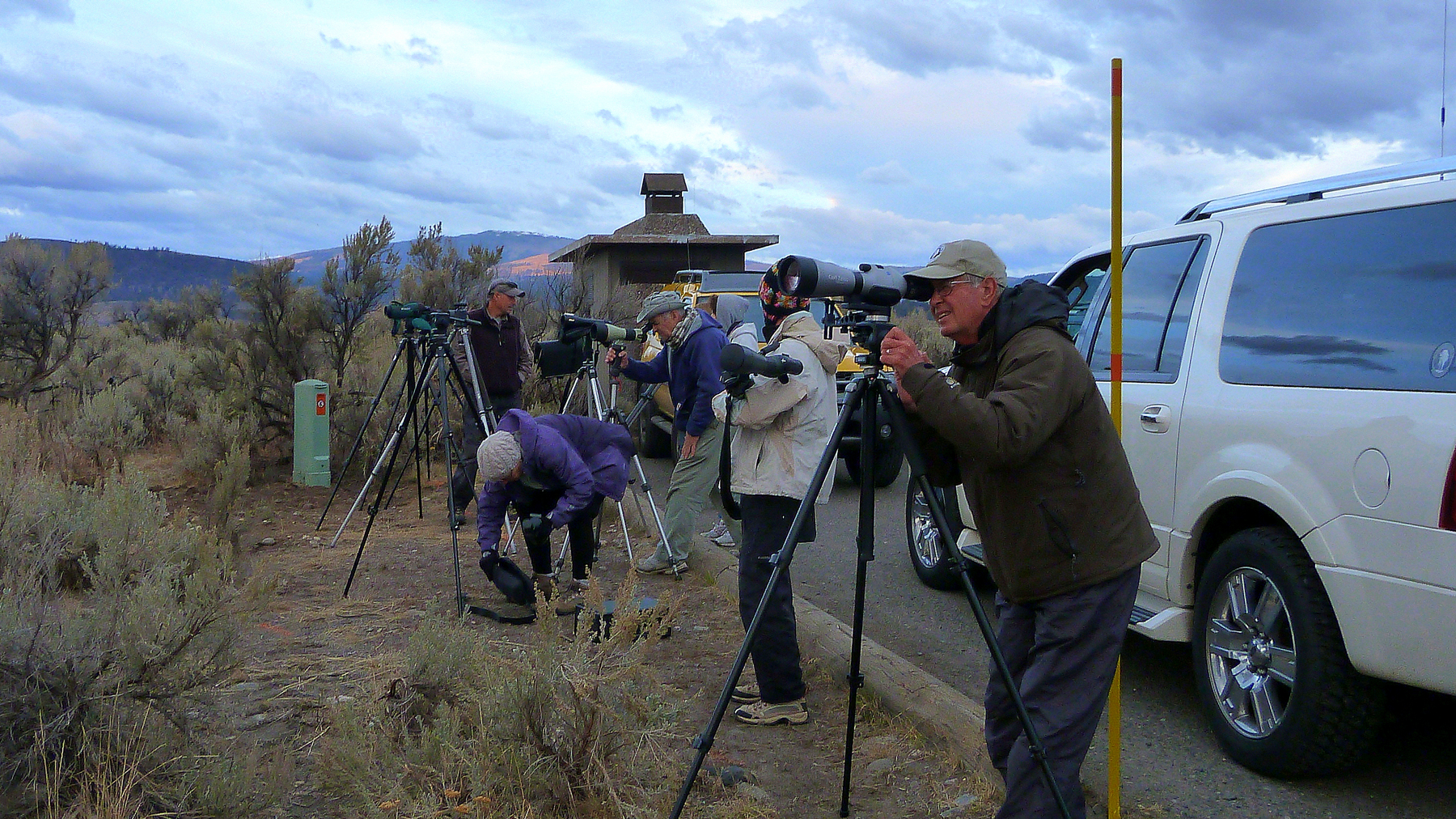
Wolf watchers in the Lamar Valley. Photo © F Delventhal / Flickr through a Creative Commons license Many visitors post their wildlife photos and trip reports online. This can alert you to special sightings or natural phenomena taking place. Some years, otters can reliably be seen chasing cutthroat trout at Trout Lake. One year, a great gray owl roosted in a specific tree all summer. Badger and coyote dens, and eagle nests, are often noted on forums (please view only from a distance).
The Mammal Watching forum features in-depth Yellowstone wildlife watching reports (including a couple by me). You can also post your questions on the Mammal Watching forum and get advice from some of the world’s top wildlife spotters.
Yellowstone Net has been the definitive site for all things related to the park since 1997. Here you will find not only the latest wildlife sightings, but trip reports and advice on lodging, food, hiking, photography and much more. It is an indispensable trip planning resource.
The Facebook group “Yellowstone Up Close and Personal” is a useful social media forum to pose questions and photos.
Of course, the official Yellowstone National Park page has the latest road closures, logistical information and a lot of helpful pointers on park activities including wildlife viewing.
-
A Matter of Etiquette
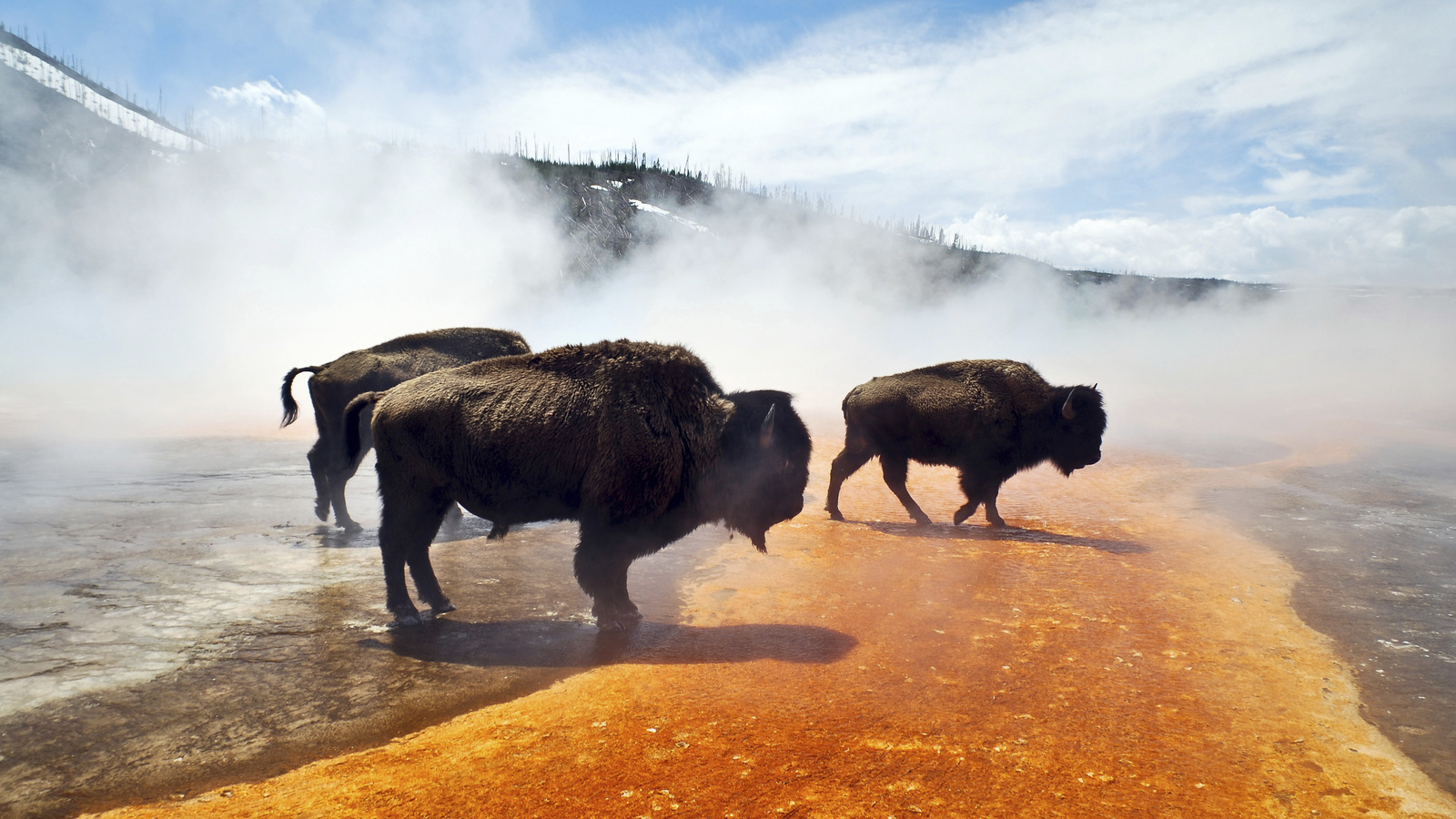
Three Bison walking through the steam across the amazingly colorful thermophilic bacteria on the edge of Grand Prismatic Spring at Yellowstone National Park in Wyoming. Photo © Jonathan Hey I hope I don’t have to tell you not to pet the bison. Or pose for a selfie by a grizzly bear. And yet, every year, I see people behaving as if the park was a petting zoo. This gets some visitors hurt, or worse.
Please follow the National Park Service’s safety rules and give wildlife plenty of space. That lazy-looking bull bison can run much faster than you can.
Check out our brief history of people behaving badly in Yellowstone for more information.
It also bears repeating that Yellowstone is not a zoo. Nature can be harsh. Animals die. Some visitors can’t accept this: In 2016, well-meaning tourists attempted to rescue a baby bison. (It ended in the bison’s death). Journalist Kris Millgate reflects on this in her Cool Green Science essay, Watching a Baby Bison Die.
-
Don’t Leave Home Without It

Get your bins ready. Photo © Justine E. Hausheer/The Nature Conservancy I suspect many readers of this blog would sooner leave home without a toothbrush than binoculars, but many casual park visitors don’t think to bring any. You need binoculars. If you are looking for wildlife, you simply can’t leave home without them.
Without binoculars, your chances of seeing bears and wolves go way down. Yes, I have had some memorable sightings close up. In the Lamar Valley, though, wolves will often be in the distance.
Bring binoculars.
-
Be Bear Aware
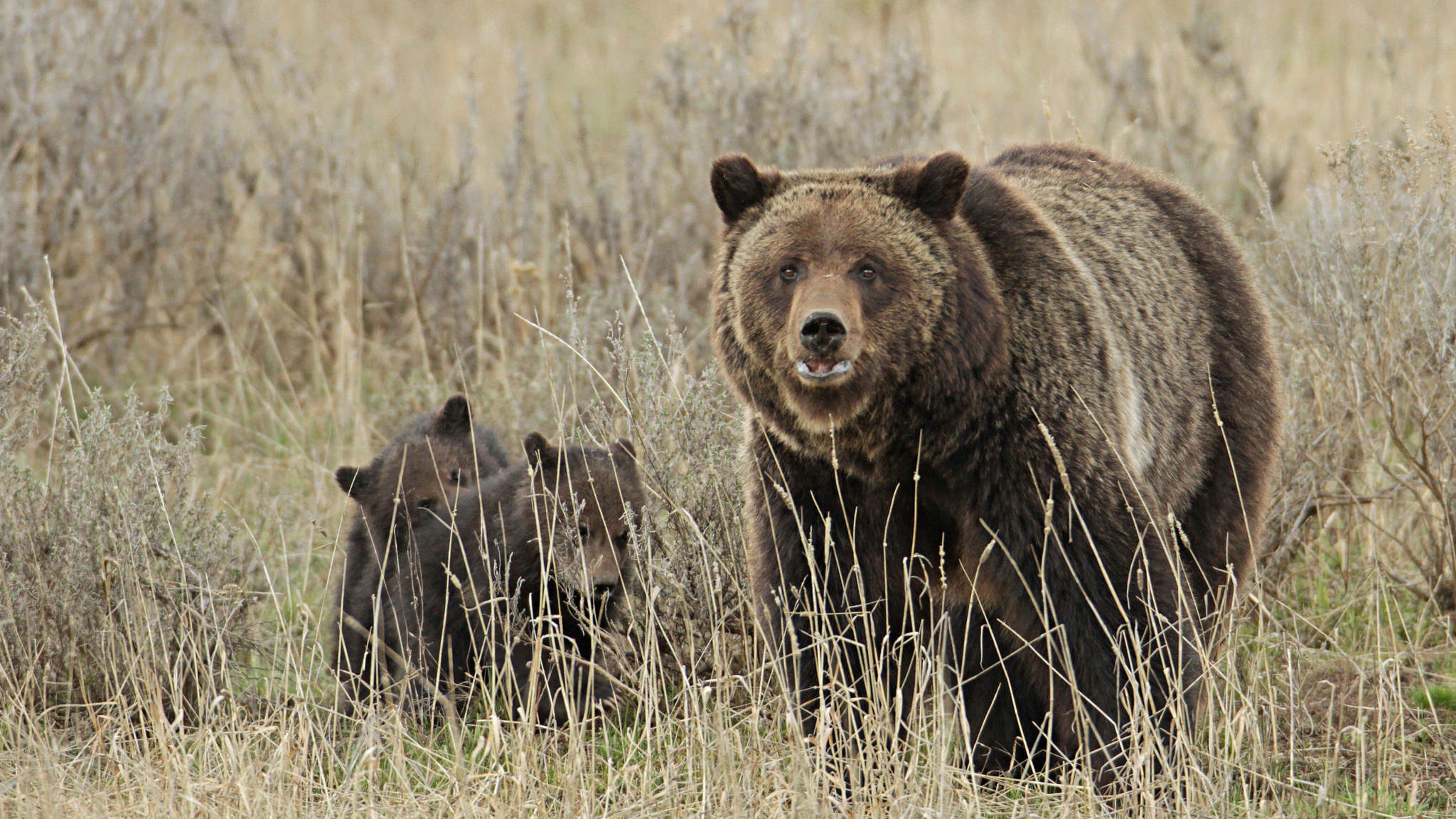
Grizzly sow and cubs near Fishing Bridge. Photo by Jim Peaco / Yellowstone National Park on Flickr in the Public Domain Hiking and camping around bears requires special attention. There is no need to spend your time in terror. Do some research, and be prepared.
I see more visitors carrying bear spray (and it’s available to rent inside the park). Just carrying bear spray is not enough. I recently had the chance to test an inert bottle of bear spray on a charging park ranger. It was hard to draw and get off a dose of spray even in that controlled environment. I need a lot of practice to be bear ready.
The Be Bear Aware web site has a wealth of information for staying safe in bear country, including extensive information on bear spray.
And while we’re on the topic of bears: you will have a more enjoyable trip if you’re familiar with the difference between black and grizzly bears. You will see many visitors pointing to a “grizzly” that is actually a brown-colored black bear. Yes, a black bear can be brown (or, on other parts of the continent, red, white or even blue).
-
Five Books to Pack on Your Trip

A good vacation deserves a good read. There have been a library’s worth of good books written on Yellowstone. Here are five of my favorites.
Engineering Eden by Jordan Fisher Smith. A riveting tale of a grizzly attack, and the battle over bear management in the park that led to the attack. A page-turning story that also tells you a lot about park history.
Yellowstone Bear Tales edited by Paul Schullery. This is more than a collection of bear attack stories (although they are here). It is a sometimes entertaining, sometimes horrifying look at how the park’s view of bears has changed over the years. At one point, a nightly bear feeding was one of the “attractions” at Old Faithful. Schullery, a long-time park historian, has written and edited other books on Yellowstone that are worth seeking out.
Lost in My Own Backyard by Tim Cahill. My favorite travel and adventure writer explores Yellowstone. As is always the case with his books, it’s funny and insightful without being preachy.
Built for Speed by John A. Byers. With all the bears, wolves and bison, you might overlook pronghorns. They’re one of the most fascinating critters in the park, and true Pleistocene survivors. This book is not Yellowstone specific, but it will give you fascinating insight into this animal’s natural history. Watch a herd of “antelope,” and you’ll see their fascinating behavior play out.
Who Pooped in the Park? Yellowstone National Park: Tracks and Scat for Kids by Gary D. Robson, illustrated by Elijah Brady Clark. This is my toddler son’s favorite, one he enjoys reading over and over again. It’s a fun guide to scat and other animal sign commonly found in the park, an endless source of fascination for youngsters.
-
The Great Migrations
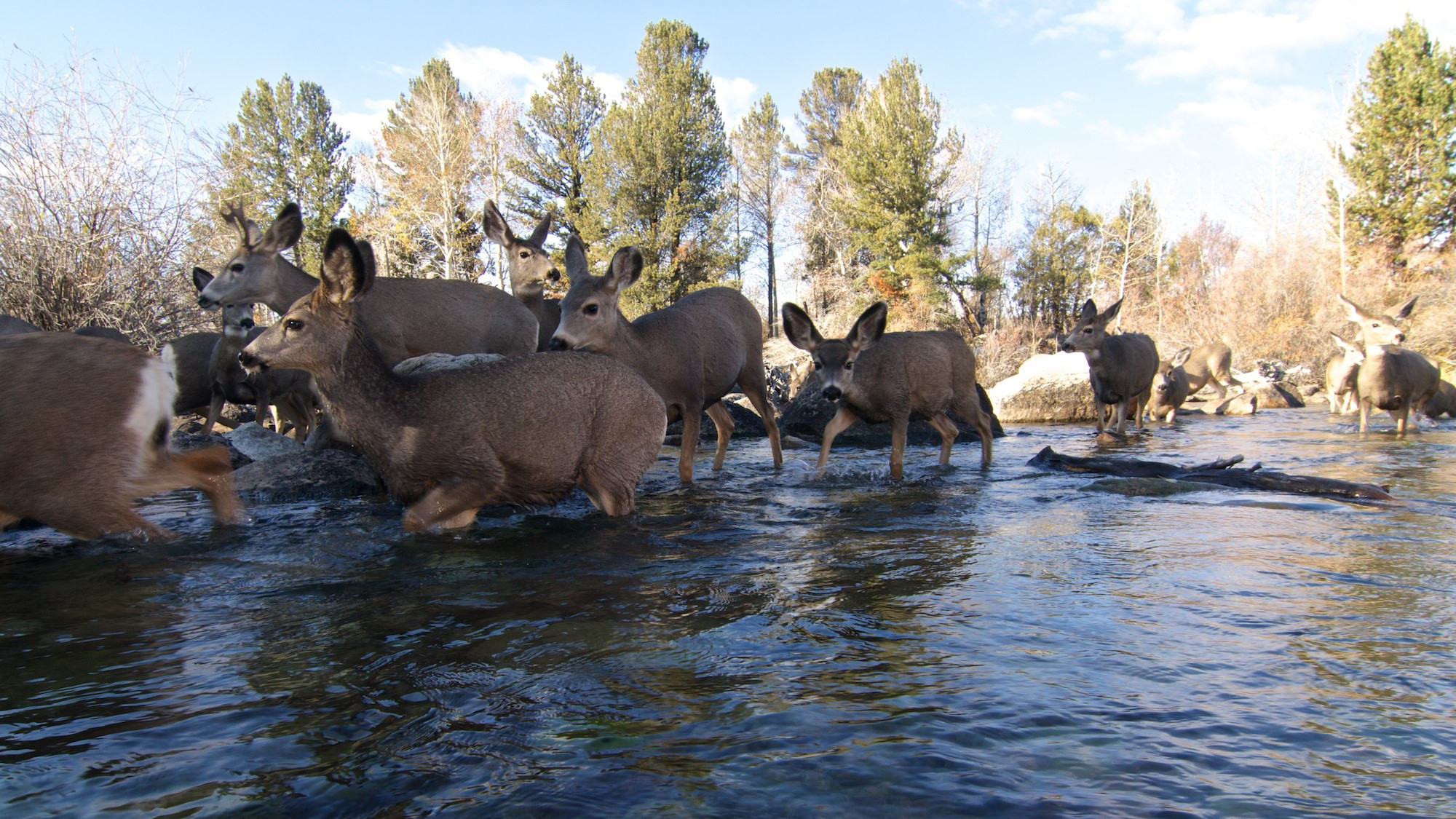
Mule deer crossing pine creek. Photo © Joe Riis For conservationists, perhaps the most important part of the park is this: What happens in Yellowstone doesn’t stay in Yellowstone. Wildlife moves beyond park boundaries. The park was originally set up in no small part due to geothermal features and scenic wonders.
Many wild animals move out of the park to escape snowy conditions. Protecting migration routes is vital to ensuring Yellowstone remains such a remarkable wildlife haven.
Read more about Yellowstone’s mammal migrations.
Just outside the park, at The Nature Conservancy’s Flat Ranch Preserve, an effort is underway to better understand the winged migration of long-billed curlews.
And underwater, Yellowstone cutthroat trout move out of Lake Yellowstone to rivers and tributaries, feeding grizzly bears, pelicans, otters and more. But that migration has taken a huge hit due to the introduction of non-native lake trout. A recovery effort is underway, applying commercial netting techniques to restore native fish.
-
Have Your Own Tips or Links?
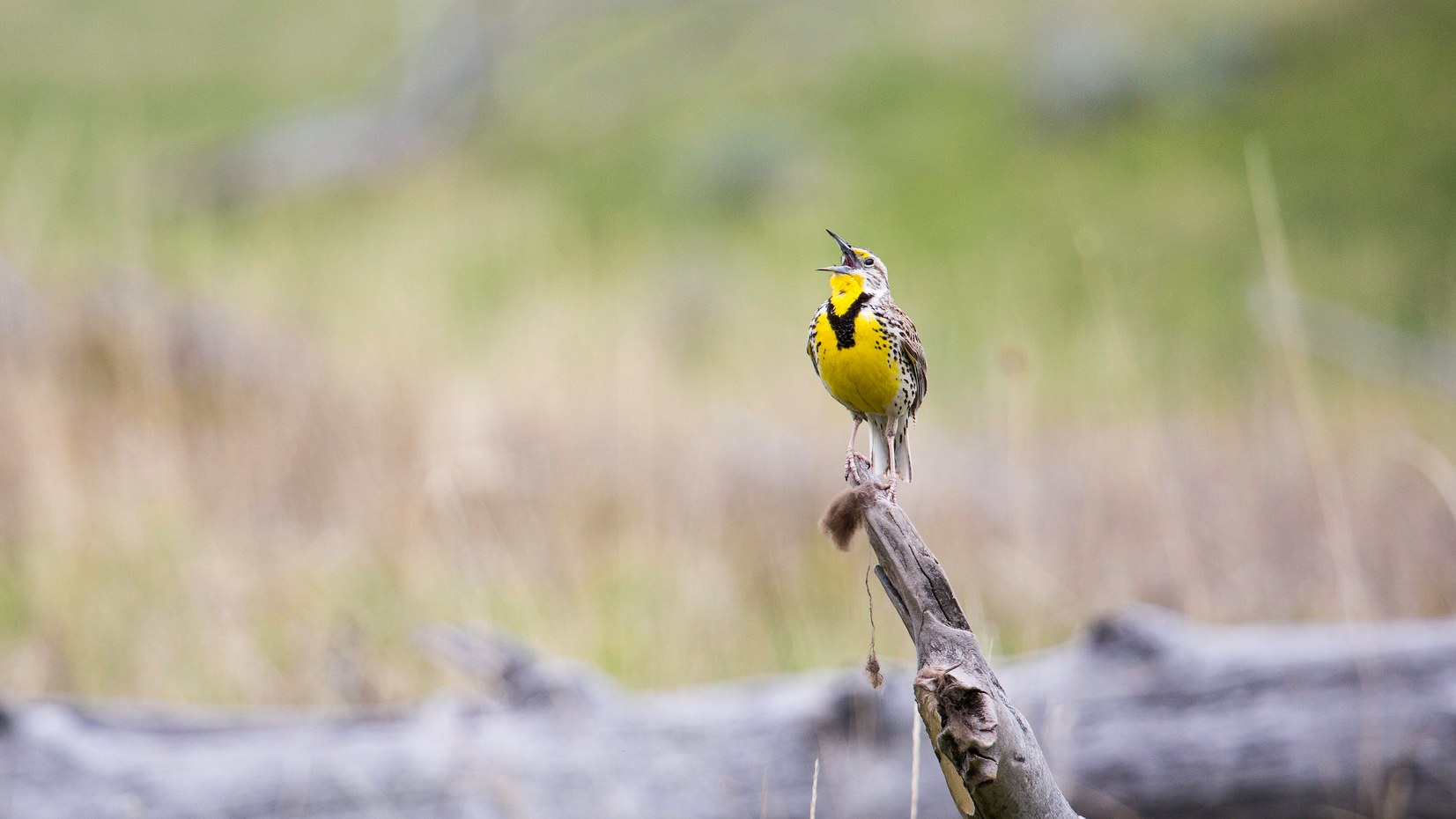
Western meadowlark, Lamar Valley. Photo © Neal Herbert / NPS on Flickr in the Public Domain Yellowstone fans have strong preferences on places to see wildlife, how to avoid crowds and more. Leave them in the comments. If you post questions about the park and its wildlife, I’ll answer them as quickly as possible.
Here’s to further explorations of Yellowstone, one of the world’s great national parks.
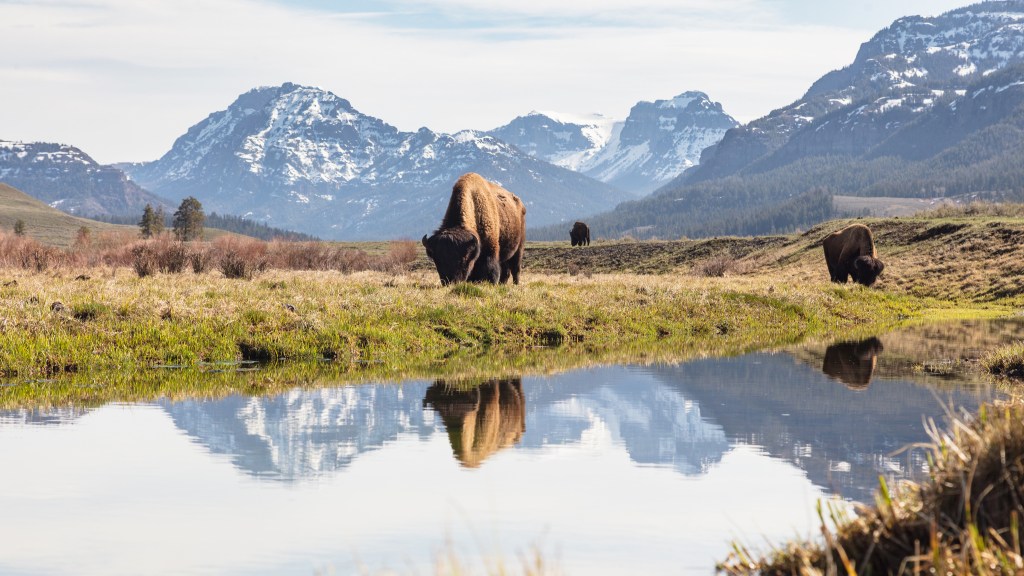



Hi,
When is the better time to see wildlife (numbers and varieties) in Yellowstone – mid July or end-Sep/Oct?
Thank you so much!
Both times are great. September/October has many benefits, the big one being fewer visitors, which in turn makes it easier to see wildlife. Bears can be active and elk are bugling.
I have visited in mid-July numerous times and have always had great trips. If you go in July, spend plenty of time in the northern part of the park (Lamar Valley, and Mammoth to Tower area). Be out early and late, and bring binoculars. My last trip to Yellowstone was in mid-July and we saw wolves, black and grizzly bears, bighorn sheep and much more.
Are wolves color blind? If so, does a baby bison’s “red” color help protect it from being seen by wolves?
Hello my name is Mardi and I have a few questions I would like to ask you. In our English class we have been tasked with researching a topic that we find interesting, we were also told that we have to contact an expert on the topic. The topic I want to learn more about is the wildlife in Yellowstone. (Mostly because I wanna try and convince my family that it would be cool to go and take a road trip there.) More specifically how the wildlife and humans interact with each other in both a positive and negative way. How is the reintroduction of the wolf species affecting local farming? How is the rise in pasture land affecting the vasts herd of bison and elk that live in the park? What are ways visitors can keep from interrupting normal life for the animals inhabiting the park?
If you could email me back or try and get back to me in anyway possible I would be very happy! Thank you for your time!
Back in 1988 I failed to take the classic photo of Yellowstone visitors behaving badly. A mid-day stop at a park picnic area revealed a large bull moose grazing on the grass in the mowed area. It was 100% surrounded by a circle of people. Some had 35mm with tele lenses, but many had instamatic-type point and shoot camera. Most of the people in the circle was within 10 yards of the moose. I watched this for ten minutes or so from a safer, more distant vantage point. Fortunately, the moose was calm and continued grazing, and the circle finally broke up. I hung around a bit longer, and the moose wandered off into the lake, drank for almost 5 minutes, then urinated (still in the lake) for several more minutes. I wonder if that bull had prostrate problems!
I find a good way to see wildlife is to stop where all the cars are parked on the side of the road and ask what are you watching?
Thanks, Matt. My husband worked for a guide company, and they offered a “national parks” 8-day series. He spent lots of time in the Park, but in peak season. I’m a native westerner, but had never been to Yellowstone, so he took me the last week of October a couple of years ago. No crowds, few services, lots of space to move around. I stood absolutely alone watching Old Faithful and we saw plenty of bison and birds, among other wonderful fauna. My recommendation: use the last week of the season, just before the Yellowstone Lodge closes and you can still get into Mammoth before the roads snow in, as your time to view wildlife.
Heading to Yellowstone late July. We’ll be camping at Bridge Bay for a week, and taking our motorcycles on the various roads each day. We’re both avid photographers. Interested in bison, bears, wolves of course, but also birds and wildflowers
Head to the northern part of the park, and be sure to spend time in the Lamar Valley. It is the best place to see grizzly bears and wolves, although you can see them anywhere.
We saw 8 black bears on a recent visit, all in the area between Tower and Roosevelt.
Wildflower blooms are great this year.
The great herds of bison were congregated in the Lamar Valley during our late June visit. They can move around a lot. The Hayden Valley is another spot you should check. But you can see bison (particularly the bulls) anywhere…near Old Faithful, around Canyon and in any meadow.
Have fun!
Thanks for the great article and resources.